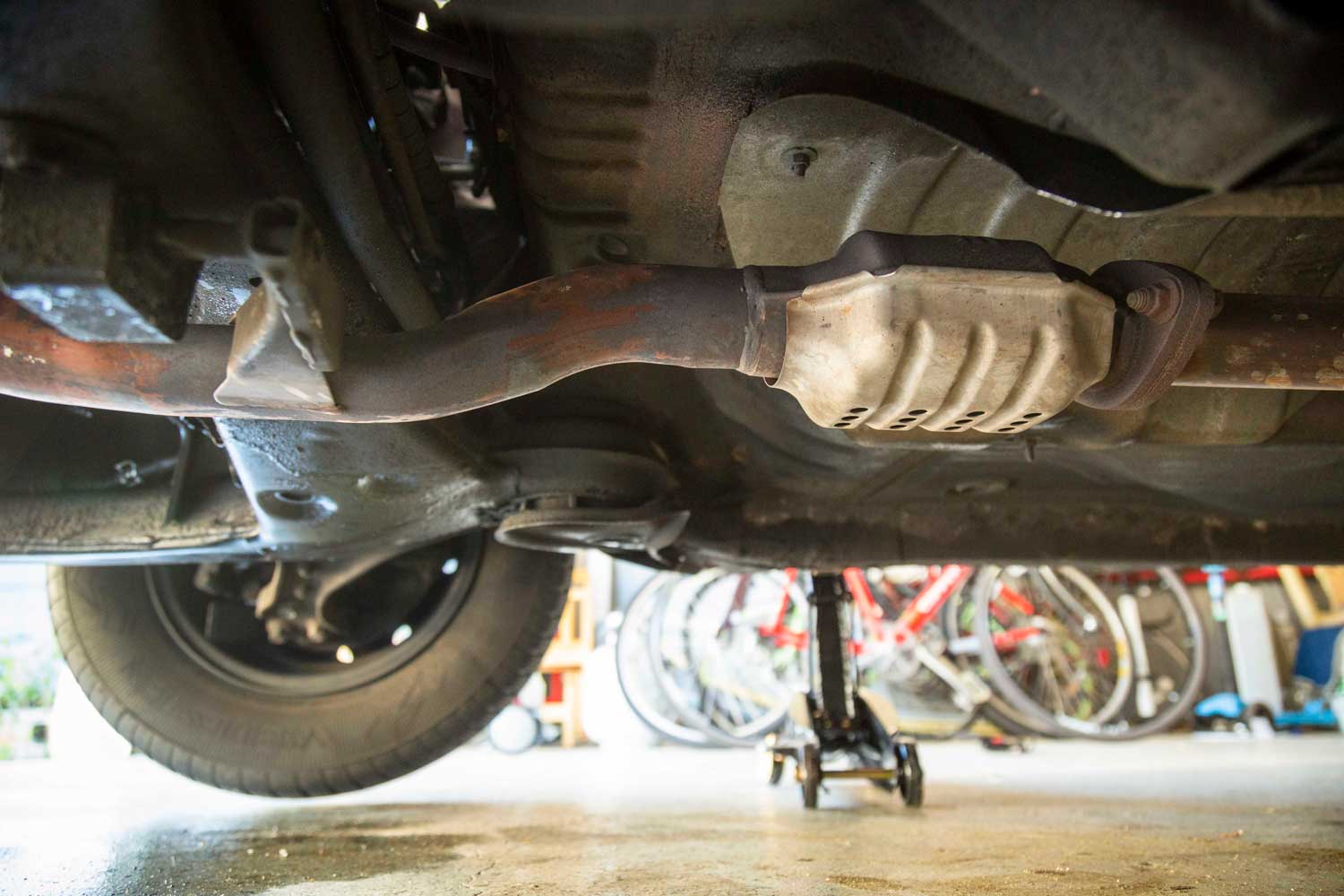How Automakers and the Car Industry Are Responding to the Uptick in Catalytic Converter Theft
Quick and easy money for thieves translates into expensive repairs for owners.
 Manuel Carrillo III | Capital One
Manuel Carrillo III | Capital One
A catalytic converter is a crucial part of most gas-powered vehicles' emissions controls. Installed as part of the exhaust system, this valuable component is increasingly at risk of being stolen. Between 2019 and 2022, catalytic converter theft climbed an incredible 1,215% as reported through insurance company claims.
Here's how the automotive industry is responding to the wave of stolen catalytic converters.
Why Are Catalytic Converters Being Stolen?
Catalytic converters clean up tailpipe emissions by reducing the level of harmful gasses released during regular driving. They accomplish this by way of a chemical reaction made possible through the inclusion of precious metals such as palladium, rhodium, and platinum, which serve as catalysts to lower the level of nitrogen oxide and carbon monoxide in the exhaust stream.
Unfortunately, the price of these metals has risen to the point where catalytic converters are an attractive target for thieves. Combine that value with the ease with which a converter can be stolen — a thief can saw one out from underneath a vehicle in just a minute or less — and opportunistic criminals have turned catalytic converter theft into a thriving and profitable industry.
How Are Car Companies Reacting to Catalytic Converter Theft?
Toyota is one of the first automakers to take action to protect vehicle owners from catalytic converter theft. In partnership with a company called Cat Shield, it offers a guard that fits over the catalytic converter, making it much more difficult for thieves to remove it. This product is available through Toyota's accessories program and can be installed on a long list of vehicles including the Prius, Tundra, Sequoia, and RAV4.
What Can I Do To Protect My Catalytic Converter?
It's possible that other car companies will begin offering similar protective add-ons, particularly for models that are most vulnerable to catalytic converter theft. Those include hybrid-electric vehicles, as their engines run less than in a traditional gas-powered car. Hybrids require the use of higher levels of precious metals in their converters to achieve the same pollution-reducing reactions in the absence of constant heat. Pickup trucks also make popular targets because of their tall ride height and ease of access to the exhaust system.
So far, Cat Shield offers aftermarket protection solely for Honda and Toyota vehicles, but other companies such as CatStrap and Cat Clamp offer more general catalytic converter protection that can be installed under a wider range of automobiles.
Some jurisdictions are also making it harder for thieves to profit from selling stolen converters. In California, a number of restrictions were signed into law making it impossible for third parties to sell used catalytic converters if they can't prove ownership. Other states are enacting similar initiatives.
Written by humans.
Edited by humans.
 Benjamin Hunting
Benjamin HuntingBenjamin Hunting is a writer and podcast host who contributes to a number of newspapers, automotive magazines, and online publications. More than a decade into his career, he enjoys keeping the shiny side up during track days and always has one too many classic vehicle projects partially disassembled in his garage at any given time. Remember, if it's not leaking, it's probably empty.
Related articles
View more related articles